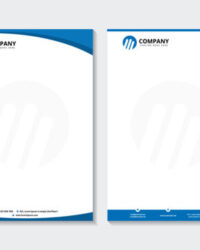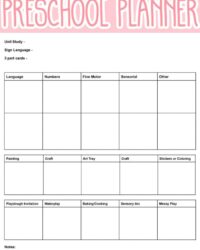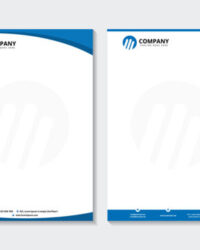Teaching kindergarten math can be an incredibly rewarding experience, watching those little minds light up as they grasp new concepts like counting, sorting, and patterns. However, ensuring every child receives the individualized attention they need to truly thrive can sometimes feel like a puzzle. This is where the magic of guided math comes in, transforming your classroom into a dynamic hub of learning where every student feels supported and challenged right at their level.
Imagine a system where you can seamlessly differentiate instruction, address specific misconceptions, and foster a love for numbers in your youngest learners. It sounds ideal, doesn’t it? The good news is that it’s entirely achievable. The key often lies in having a clear, structured approach, and that’s precisely what a well-designed guided math lesson plan template for kindergarten can offer. It acts as your roadmap, ensuring consistency and effectiveness in your daily math block.
Why Guided Math is a Game Changer for Kindergarteners
Guided math is more than just a teaching strategy; it’s a philosophy that centers on meeting students where they are. In a kindergarten classroom, this means moving beyond whole-group lectures and embracing small group instruction, hands-on activities, and differentiated tasks. Instead of a one-size-fits-all approach, guided math allows you to work closely with small groups of students who are at similar developmental stages or who need focused attention on a particular skill. This intimate setting encourages participation, allows for immediate feedback, and helps build confidence.
Think about it: in a class of 20-25 kindergartners, it’s nearly impossible to observe every child’s understanding during a whole-group lesson. Guided math breaks down these barriers. While you are working intensively with one small group, other students are engaged in purposeful math stations or independent practice. This cyclical approach ensures that all students are active learners for the majority of the math block, rather than passively listening.
The benefits extend beyond just academic gains. Guided math fosters independence, problem-solving skills, and collaboration among students. They learn to navigate activities, work with peers, and take ownership of their learning. This active engagement is crucial for kindergarteners, whose attention spans are still developing and who learn best through doing and experiencing.
It also provides invaluable assessment opportunities. When you’re sitting with a small group, you can truly listen to their mathematical thinking, observe their strategies, and pinpoint areas where they might be struggling or excelling. This real-time formative assessment allows you to adjust your instruction on the fly, making sure no child is left behind or unchallenged.
Key Components of a Successful Guided Math Block
- Warm-Up/Whole Group Mini-Lesson: Begin with a brief, engaging whole-group activity to introduce a new concept or review a prior one, setting the stage for the day’s learning.
- Small Group Instruction: This is the heart of guided math, where you work with 4-6 students on a targeted skill, providing direct instruction, hands-on practice, and immediate feedback.
- Math Stations/Centers: Students rotate through various independent or partner activities that reinforce skills previously taught. These might include games, technology-based tasks, or manipulatives.
- Wrap-Up/Share: Conclude with a quick whole-group debrief, allowing students to share what they learned or accomplished during their stations or small group time.
Benefits for Young Learners
- Differentiation: Easily tailor instruction to meet diverse learning needs, from those needing extra support to those ready for advanced concepts.
- Increased Engagement: Hands-on activities and small group settings keep kindergartners actively involved and excited about math.
- Deeper Understanding: Direct instruction in small groups allows for thorough exploration of concepts and immediate clarification of misconceptions.
- Building Confidence: Success in a supportive small group environment helps children develop a positive self-concept as mathematicians.
Crafting Your Ideal Guided Math Lesson Plan Template Kindergarten Edition
While the concept of guided math is powerful, putting it into practice effectively requires thoughtful planning. This is where a robust guided math lesson plan template kindergarten-focused becomes an indispensable tool. A good template doesn’t just list activities; it prompts you to think through the “why” and “how” of each part of your math block, ensuring coherence and intentionality.
A template provides a consistent framework, reducing the cognitive load of planning from scratch every day or week. You can easily see all the necessary components at a glance, making sure you’ve covered objectives, materials, assessments, and differentiation strategies. Over time, you’ll find yourself streamlining your planning process, freeing up more time to focus on teaching and interacting with your students rather than paperwork.
The beauty of a template is its adaptability. While it provides structure, it’s not rigid. You can customize sections, add notes about specific student needs, or tweak activities based on real-time observations. It evolves with your classroom and your students, becoming a living document that supports your teaching journey and helps you refine your guided math approach year after year.
Essential Sections for Your Template
- Lesson Title/Topic: Clearly state the math concept being addressed (e.g., “Counting to 20,” “Identifying Shapes”).
- Learning Objective(s): What will students be able to do by the end of the lesson? (e.g., “Students will be able to count objects up to 10 with one-to-one correspondence”).
- Materials Needed: A comprehensive list of all manipulatives, worksheets, and resources for the small group and stations.
- Whole Group Warm-Up: Outline the brief introductory activity.
- Small Group Plan(s): Detail the specific activities and teaching points for each small group, including questions to ask and potential misconceptions to address.
- Math Station Rotations: List the activities for each independent station.
- Differentiation/Intervention: Notes on how to support struggling learners and extend learning for advanced students.
- Assessment: How will you gauge student understanding? (e.g., observation, exit ticket, quick check).
- Reflection: A small section for post-lesson notes on what went well and what could be improved next time.
Implementing guided math with the support of a dedicated template for kindergarteners truly transforms the learning landscape. It shifts the classroom dynamic from teacher-led to student-centered, empowering young learners to explore, question, and discover mathematical concepts at their own pace and in their own way. This approach nurtures not just their academic skills but also their confidence and problem-solving abilities, laying a strong foundation for future mathematical success.
By consistently utilizing a well-structured plan, you can ensure that your math block is purposeful, engaging, and effectively meets the diverse needs of every child in your care. It’s an investment in their early mathematical journey that pays dividends in understanding, enjoyment, and lifelong learning.


